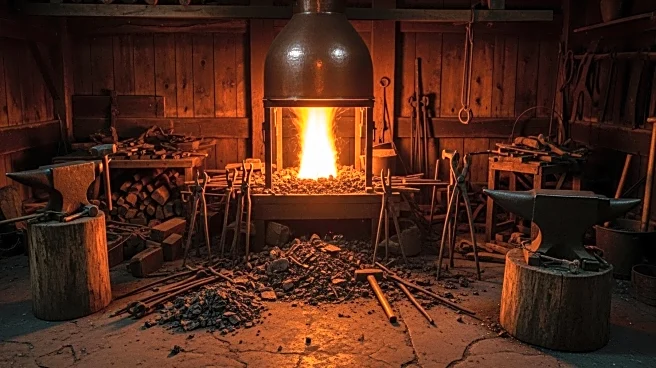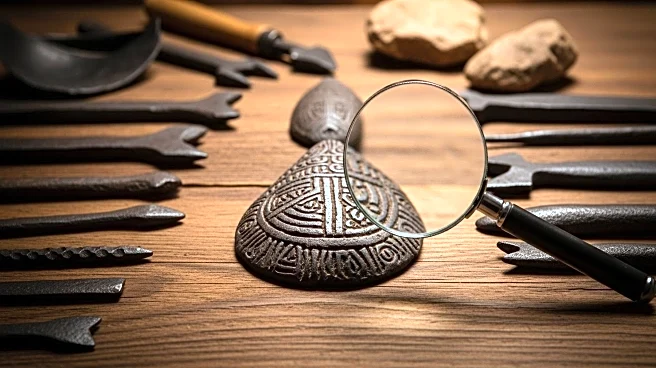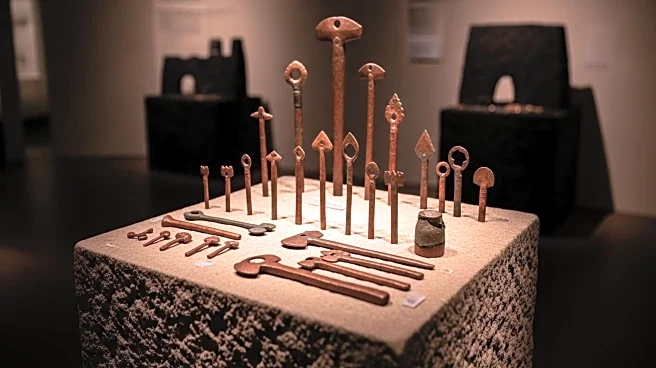What is the story about?
What's Happening?
Researchers from Cranfield University have reexamined artifacts from a 3,000-year-old site in Kvemo Bolnisi, Georgia, revealing that early copper smelters may have inadvertently sparked the dawn of the Iron Age. The study, published in the Journal of Archaeological Science, suggests that copper artisans used iron oxides as a flux to enhance copper yields, rather than intentionally smelting iron. This accidental experimentation with iron-rich minerals could have been a crucial step in the development of iron metallurgy. The findings challenge previous assumptions that the site was an early iron-smelting location, instead highlighting the role of copper workers in the technological transition.
Why It's Important?
The discovery at Kvemo Bolnisi offers new insights into the gradual evolution of iron metallurgy, suggesting that the Iron Age emerged through iterative experiments within existing copper-smelting practices. This challenges the notion of a sudden technological revolution, instead proposing a slow evolution shaped by everyday metallurgical problem-solving. The research underscores the importance of reexamining other copper smelting sites for similar traces, potentially reshaping the narrative of iron's emergence as a distributed process rather than isolated innovation. This has broader implications for understanding technological evolution and innovation in human history.
What's Next?
Researchers advocate for the reexamination of copper smelting sites elsewhere to determine if Kvemo Bolnisi's findings are unique or part of a broader pattern. If similar traces are found, it could lead to a shift in understanding the origins of iron metallurgy, emphasizing the role of copper artisans in the transition. This could prompt further archaeological investigations and studies to accumulate more data on early iron smelting activities, potentially altering the historical narrative of technological advancements.
Beyond the Headlines
The study highlights the importance of interdisciplinary approaches in archaeology, combining modern analytical techniques with historical artifacts to uncover new insights. It also raises questions about how human technologies evolve through trial and error, emphasizing the role of experimentation in technological advancements. The findings challenge traditional views of innovation, suggesting that significant leaps in technology can emerge from incremental learning within established practices.
AI Generated Content
Do you find this article useful?














